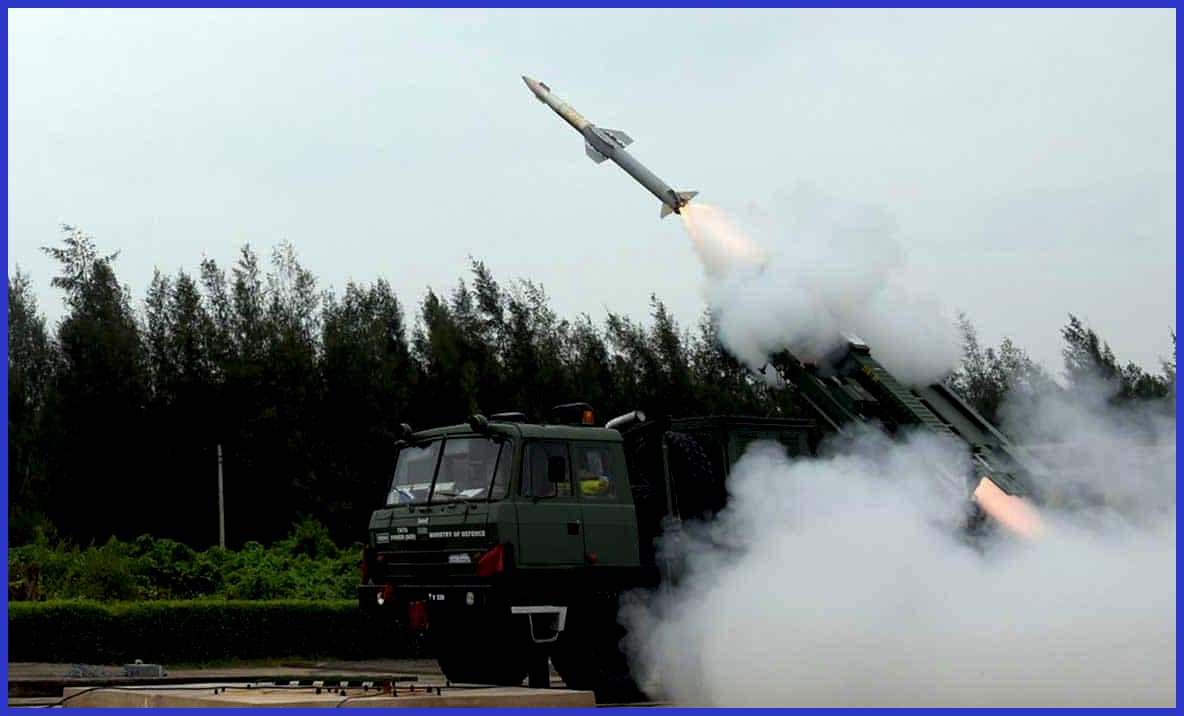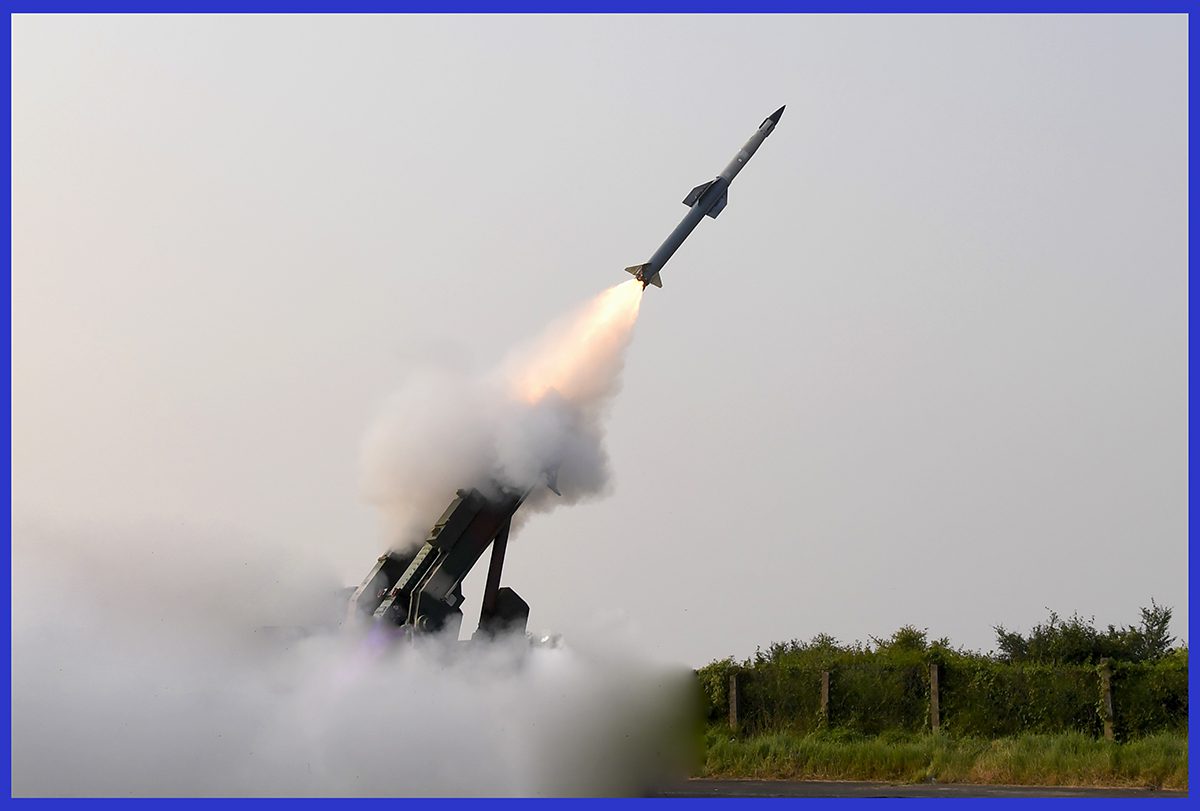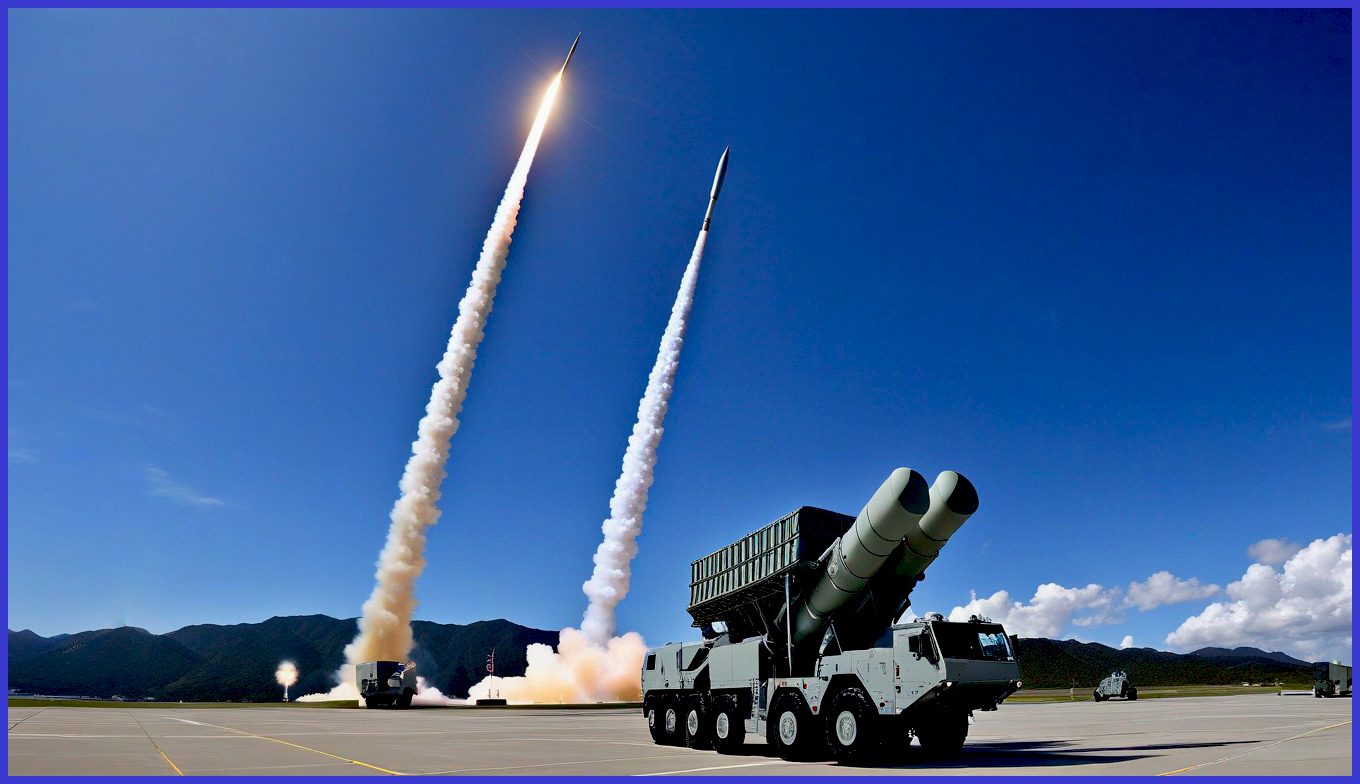When it comes to the safety and security of the country, a bold step is required to safeguard its sovereignty. Discover the Best of Ballistic Missile Defence in India, a multi-layered defence mechanism designed to protect against incoming ballistic missile threats involving both public and private companies in its development. Participants include the Defence Research and Development Organisation (DRDO), Bharat Electronics Limited (BEL), and Bharat Dynamics Limited (BDL), among others.

The system comprises two main components: the Prithvi Air Defense (PAD) for high-altitude interception and the Advanced Air Defense (AAD) for lower altitudes. The indigenous systems aim to detect, track, and destroy ballistic missiles during their different phases of flight.
Key elements include radar systems, command and control centres, and interceptor missiles. With successful tests, India has demonstrated its commitment to strengthening national security and deterring potential missile threats. The BMD system underscores India’s technological prowess in developing and deploying advanced defence capabilities to safeguard its borders and population against evolving security challenges.

Project Prioritisation Frameworks: A Comprehensive Overview
Initiated in 2000 following the Kargil War by the Atal Bihari Vajpayee government, and with a specific focus on countering the ballistic missile threat from Pakistan and China, the Ballistic Missile Defence (BMD) system is a dual-tiered system consisting of two land and sea-based interceptor missiles. The system encompasses an interconnected network of early warning and tracking radars, along with command and control posts.
The Prithvi Air Defense (PAD) underwent testing in November 2006, followed by the Advanced Air Defense (AAD) in December 2007. India achieved the successful test of the PAD missile, making it the fourth country to develop an anti-ballistic missile system, after the United States, Russia, and Israel. According to reports, the first phase of the Ballistic Missile Defence (BMD) program was completed in 2020.

Programme Requirements: The initial confrontation between two officially declared nuclear powers transpired during the Kargil War, a conflict between India and Pakistan. As the conflict persisted, Pakistan’s foreign secretary, Shamshad Ahmad, stated on May 31 cautioning that an escalation of the ongoing hostilities might compel Pakistan to deploy “any weapon” within its arsenal. This marked the first suggestion for the potential use of a nuclear bomb.
The immediate interpretation of this statement was that Pakistan was unequivocally threatening nuclear retaliation in the event of a prolonged conflict. “The purpose of developing weapons becomes meaningless if they are not used when they are needed,” declared the head of Pakistan’s senate. Some scholars speculate that the Pakistani military, encouraged by its nuclear deterrent, escalated its use of coercion against India following the country’s nuclear tests in 1998.
The initiation of an anti-ballistic missile system’s development took place in late 1999, indicating India’s commitment to the program due to concerns arising from Pakistan’s abandonment of a nuclear No First Use policy and escalated tensions during the Kargil War, which raised the spectre of a potential full-scale nuclear conflict. Substantial progress in indigenous development occurred following the rejection by Washington of India’s attempt to procure the Israeli Arrow-2 interceptor in 2002.

Completion of Phase-1 Development
The development of an anti-ballistic missile system commenced in late 1999, engaging approximately 40 public and private companies in the project. Under the purview of the Defence Research and Development Organisation (DRDO), these companies encompass the Ordnance Factory Board, Bharat Electronics Limited, and Bharat Dynamics, among others.
The Defence Research and Development Laboratory (DRDL) was responsible for developing the mission control software for the AAD missile, while the Research Centre Imarat (RCI) focused on navigation, electromechanical actuation systems, and the active radar seeker. The Advanced Systems Laboratory (ASL) supplied the motors, jet vanes, and structures for the AAD and PAD. The High Energy Materials Research Laboratory (HEMRL) provided the propellants for the missile.
As of April 2019, Phase-1 of the program has been completed, achieving successful interception and destruction of incoming ballistic missiles at various altitudes up to a 2,000 km range. Overall, all wings have attained successful milestones in this phase within their respective areas of development.

Advancements in Phase-2 Development
Two types of high-speed missiles, designated as Air Defence AD-1 and AD-2, are presently in the developmental phase for intercepting ballistic missiles with a range of around 5,000 km (3,100 mi). Anticipated test trials for these systems were originally planned for 2011. These emerging missiles share notable similarities with the THAAD missile system deployed by the United States in various regions.
Specifically designed to achieve hypersonic speeds exceeding Mach 5, they necessitate radars with a scanning capability surpassing 1,500 km (930 mi) for the successful interception of the target. As part of the ongoing program, India is also advancing a laser-based weapon system as a crucial element of its defence strategy, aimed at intercepting and neutralizing missiles shortly after their launch. The overarching objective is to eliminate ballistic missiles carrying nuclear or conventional warheads during their boost phase.

The DRDO Floating Test Range (FTR) vessel INS Anvesh (A41) is set to undergo sea trials for the program. The first successful flight of the AD-1 missile took place in November 2022. It was designed for endo-atmospheric and low exo-atmospheric interception against missiles, as well as for airborne early warning and control aircraft (AWACS). The AD-1 is propelled by a two-stage solid rocket motor and equipped with an advanced control system, navigation, and guidance algorithm, along with an increased kill altitude bracket.
Under the Phase-2 program, the AD-1 is designed to neutralize medium-range ballistic missiles at a range of 1,000-3,000 km, whereas the AD-2 is intended to intercept intermediate-range ballistic missiles at a range of 3,000-5,500 km. In April 2023, DRDO and the Indian Navy conducted the maiden flight trial of a sea-based interceptor missile for naval ballistic missile defence capability.

Components of the Ballistic Missile Defence Programme
India’s Ballistic Missile Defence (BMD) program integrates various components to establish a comprehensive defence against ballistic missile threats. The two-tiered BMD System includes the PAD ( Prithvi Air Defense ), designed to intercept missiles at exo-atmospheric altitudes of 50–80 km (31–50 mi), and the AAD ( Advanced Air Defense ) missile for interception at endo-atmospheric altitudes of up to 30 km (19 mi).
The deployed system comprises numerous launch vehicles, Radar Systems, Sensor and Fire Control Systems, Launch Control Centres (LCC), and the Mission Control Centre (MCC). All these components are geographically distributed and connected by a secure communication network. A robust communication infrastructure is essential for real-time data exchange between different components of the BMD system.
The Mission Control Centre (MCC) serves as the software-intensive element within the ballistic missile defence system. It collects information from diverse sources, including radars and satellites, and processes this data using ten simultaneously operating computers. The MCC is interconnected with all other defence components through a Wide Area Network (WAN). Its functionalities encompass target classification, target assignment, and kill assessment. Additionally, it functions as a decision support system for the commander, enabling rapid decisions on the launch of the precise Surface-to-Air (interceptor) missile against incoming threats, typically within a matter of seconds.

It can also determine the necessary number of interceptors required for the target to ensure a high kill probability. Following the execution of these functions, the MCC assigns the target to the Launch Control Centre (LCC) of a launch battery. The LCC initiates computations to determine the optimal time for launching the interceptor, relying on information received from a radar that considers the speed, altitude, and flight path of the target. The LCC prepares the missile for launch in real time and conducts ground guidance computations. Once the interceptor is launched, it receives target information from the radar through a data link.
As the interceptors approach the target missile, the radar seeker is activated to locate the target and guide the interceptor for interception. When the interceptor missile reaches very close to the target, it employs either a Proximity Fuse warhead, designed to detonate near the incoming threat to destroy it, or the Hit-to-Kill method. In the Hit-to-Kill method, the interceptor missile destroys the incoming threat by colliding with it at high speed. Multiple PAD and AAD interceptors can be launched against a target to achieve a high aspect kill probability.

Specifications of the Prithvi Air Defence (PAD)
The PAD system is crafted for the high-altitude interception, particularly aimed at targeting ballistic missiles in the exoatmospheric region. Evolving from the Prithvi missile commissioned in 1994, the PAD is a two-stage missile designed to achieve a maximum interception altitude of 80 km (50 mi). The first stage is propelled by a solid-fueled motor, while the second stage employs liquid fuel. The system is equipped with manoeuvre thrusters capable of generating a lateral acceleration exceeding 5 gs at an altitude of 50 km.
The Long Range Tracking Radar (LRTR) provides mid-course updates, and the PAD uses active radar homing during the terminal phase to aid in guidance. With a range of up to 3,000 km (1,900 mi), the PAD system has the capacity to combat ballistic missiles at Mach 5. Due to its high speed, it can intercept both intermediate- and medium-range ballistic missiles (MRBM and IRBM). The LRTR utilizes active phased array radar; hence, 200 targets can be tracked at a distance of 1,500 km (930 mi).

Specifications of the Advanced Air Defence (AAD)
The AAD system is equipped with an interceptor missile designed for mid-altitude interception of ballistic missiles with an operational range of 200 km (120 mi). The interceptor missile is designed to engage targets in the endoatmospheric region at a flight ceiling altitude of 40 km (25 mi). It is a single-stage, solid-fueled missile with siliconized carbon jet vanes.
For guidance, it is similar to that of the PAD system, supporting an inertial navigation system (INS), mid-course updates from ground-based radar, and active radar homing in the terminal phase. With a mass of 1,200 kg (2,600 lb), a length of 25 ft, a diameter of 1.6 ft, and an 80 kg (180 lb) pre-fragmented warhead. Its maximum speed was calculated up to Mach 4.5.

Swordfish play a crucial role in the target acquisition and fire control radar within the Ballistic Missile Defence (BMD) system, utilizing the L-band frequency. The Long Range Tracking Radar (LRTR) currently boasts an impressive range of 600 km (370 mi) to 800 km (500 mi) and exhibits remarkable sensitivity, capable of detecting objects as small as a tennis ball. DRDO has articulated ambitious plans to further augment Swordfish’s capacity to an impressive 1,500 km by 2017. This expanded range variant, referred to as Super Swordfish or Very Long Range Tracking Radar (VLRTR), was officially introduced in 2017 as a pivotal component of the Indian Ballistic Missile Defence Programme and, according to reports, is now operational.
The enhanced capabilities of VLRTR are noteworthy, enabling it to detect and track a remarkable 200 targets simultaneously, all travelling at speeds exceeding Mach 12. As of January 2019, Swordfish has demonstrated its efficacy by successfully detecting and tracking over 10 missile interceptions, a testament to its advanced capabilities, including two exo-atmospheric hit-to-kill missions.

Development of the Updated Version of PAD: Prithvi Defence Vehicle (PDV)
A new exo-atmospheric interceptor missile, named the Prithvi Defence Vehicle (PDV), has been under development since 2009 by DRDO. It features a mid-course Ring laser gyro-based inertial navigation system, and for the terminal phase, an Imaging Infrared Homing (IIR) seeker is integrated for its kill vehicle.
The missile is two-staged, both powered by solid propellants with an innovative system for vehicle control at altitudes exceeding 180 km. The PDV is designed to replace the existing PAD/AAD combination, completing Phase 1 of the BMD shield with a more capable missile featuring hit-to-kill interception.
Phase 2 development aims to enhance protection against missiles of the 5,000 km (3,100 mi) range. The PDV is specifically designed to intercept target missiles at altitudes above 150 km. On April 27, 2014, DRDO successfully conducted the first PDV test, followed by a second successful test on February 11, 2017, and a third test on February 12, 2019.

Development Updates on Prithvi Defence Vehicle (PDV), Mark 2
In March 2019, India conducted a noteworthy Anti-Satellite Weapon (ASAT) test, officially designating it as a Ballistic Missile Defence interceptor. The PDV Mk.2, with a towering height of 43 ft and a weight of 18.87 tons, is a sophisticated three-stage missile boasting a diameter of 4.6 ft. Specifically engineered for hit-to-kill interception capability, it employs solid rocket motors with flexible nozzles for the initial two stages, while the third stage comprises the Kill Vehicle. According to an official report published on the DRDO website, the missile showcases the impressive capability to intercept targets travelling at a staggering speed of 10 km per second in orbits as high as 1,200 km.
The latest iteration incorporates an indigenous guidance system featuring a Ring Laser Gyro-based Inertial Navigation System and a redundant micro-navigation system for mid-course while employing Imaging Infrared (IR) homing with an exceptional accuracy of less than 10cm during the terminal phase. There are indications that this missile may possess the capability for exo-atmospheric interception of Intercontinental Ballistic Missiles (ICBMs), as suggested by a report on the official DRDO website. In a confirmation at DefExpo 2020, DRDO declared the readiness of PDV Mk.2 for limited series production.

Deployment of the Indian Ballistic Missile Defence (BMD) System
In August 2017, the government approved the allocation of 850 hectares of land in the Alwar district and 350 hectares in the Pali district of Rajasthan for the installation of radars to track missiles by the DRDO. According to scientist V K Saraswat of DRDO, New Delhi, the national capital, and Mumbai were initially chosen for the ballistic missile defence shield.
Following their successful implementation, the system is intended to be extended to cover other major cities across the country. Currently, the shield is capable of effectively destroying incoming ballistic missiles launched from distances as far as 2,500 km (1,600 mi) away.
Upon the completion of Phase II and the full development of PDV, the two anti-ballistic missiles will be able to intercept targets from up to 5,000 km (3,100 mi) in both exo and endo-atmospheric (inside the atmosphere) regions. Nevertheless, the missiles are designed to operate in a coordinated, tandem fire configuration, guaranteeing a high hit probability of 99.8 per cent.

Alongside this article, seize the exclusive opportunity to acquire premium 1/72 scale diecast models of legendary fighter jets, including the Rafale, Typhoon, Mirage 2000, and Tornado. Available only at Air Models, these masterpieces embody sheer excellence. These remarkable and iconic long-range military fighters boast impeccable track records and are now available for purchase on AirModels with worldwide delivery. Click here now to secure your piece before the limited stock is depleted.

In conclusion, India’s Ballistic Missile Defence (BMD) program represents a significant stride in bolstering national security. The integration of components such as the Prithvi Air Defence (PAD) and Advanced Air Defence (AAD) systems, along with radar, command and control infrastructure, and interceptor missiles, underscores the nation’s commitment to developing a robust defence against ballistic missile threats.
While specific technical details remain guarded for security reasons, the program’s advancements in interception capabilities, radar technologies, and overall system integration demonstrate India’s dedication to staying at the forefront of defence technology. As the BMD program progresses, ongoing research and development efforts are likely to enhance the effectiveness and scope of the system, reflecting India’s proactive approach to safeguarding its borders and population against evolving security challenges.

Important Announcement for Our Valued Readers!
After an article is published, it is possible that updates or changes may have occurred beyond the time of publication. Therefore, it is important to be aware that certain information in the article might be outdated. To ensure the most accurate analysis, it is highly recommended to verify the content with the latest sources available.
However, we are dedicated to delivering outstanding articles on military products and global updates. Maintaining quality and smooth operation requires resources. Your support sustains our efforts in providing insightful content. By purchasing high-quality products through our affiliated links, you help us keep our platform alive and acquire top-notch items. Your unwavering support is invaluable and inspires us to strive further.
We welcome your suggestions and requests for more information, as we value feedback from our readers. If there’s specific defence material or equipment not covered on our site, please share your request in the comments. We’ll strive to research and provide the required information. We sincerely thank you for your unwavering interest in our website, and we eagerly anticipate hearing from you! Enjoy your reading experience!
